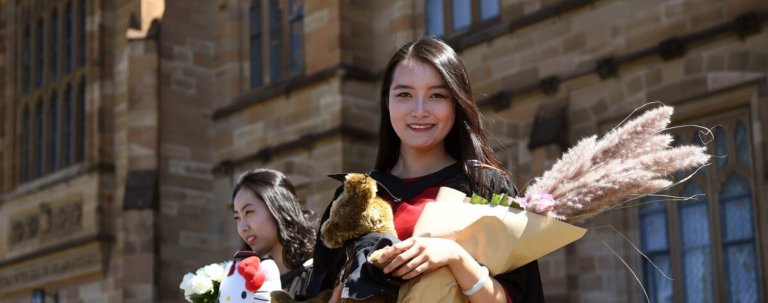
Chinese students in Australia are still unable to return to their universities as a result of a travel ban on all visitors from mainland China. Issued in February, the ban rendered 100,000 students ineligible to enter the education hub.
Increasing political tension between the two governments has caused many to question the position of Chinese students in Australia. So far, China raised Australian barley import tariffs by 80 percent and banned beef imports from four Australian abattoirs. Are Chinese students the next casualty in waiting?
What Chinese students mean to the Australian economy
International student spending is the country’s fourth-largest export; while the size of this industry has made it resilient, its overwhelming number of students from China places both universities and students in precarious positions.

Chinese students make up the majority of international students in Australia. Source: Shutterstock
If students from China do not return to Australia, universities could lose A$12 billion over the next two years.
This is according to University of Sydney sociologist Salvatore Babones, who also said Chinese students contribute 11 to 26 percent of revenue in Australia’s eight major universities.
Professor Babones was the lead author of a report by the Center for Independent Studies that outlined political tension as one of the top risk factors to threaten the influx of Chinese students in Australia.
He pins the incoming crisis on Australian universities, which have “surfed the wave of increasing Chinese enrollments without a life jacket on.”
How students are reacting
The future of Chinese students in Australia depends how far Canberra and Beijing will take this “trade war”. As it stands, three measures have been reported by Australian media.
When the travel ban first came into effect, certain students were circumventing the ban by flying into Australia from a third country after having spent 14 days there.

Although Chinese students can get into Australia from a third country, the practice defeats the purpose of the travel ban. Source: Nicholas Asfouri/AFP
The Australian reported how one Sydney university was offering A$1,500 aid to help students do this. On top of that, Chinese travel agents were advertising “14-day, 13-night” packages to Chinese students. For rates starting A$2,700, they could transit at a regional holiday destination such as Thailand or Malaysia before making their way into Australia.
Babones called this “unsustainable and unconscionable” while Education Minister Dan Tehan admitted that although the Australian government never encouraged this practice, “there is nothing within Australia’s current travel restrictions to stop them”.
Then there are students who were slated to start their course during the new academic year in February. Since entering Australia is no longer an option, some are taking their higher education aspirations elsewhere, such as Canada or one of Europe’s friendlier nations.
Other Chinese students are choosing to differ the semester or year so as to avoid paying fees for services they cannot access.
As policies and sentiments shapeshift over the coming months, so will Australia’s higher education sector. The billion-dollar question is, will its largest group of international students be around for it?
Liked this? Then you’ll love…
International students may be able to enter Australia by July 2020
Students in China’s virus centre Wuhan return to school







